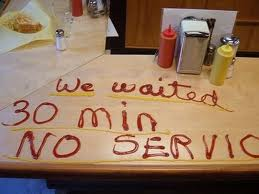The Omni-Channel Experience, shaken or stirred: right concept, wrong name?
Any time, any place anywhere – it’s the right one. Who knew that the now decades-old yet iconic Martini ad campaign was forming the basis of what is now tagged as the Omni-channel experience.
The concept is exercising many brains right now. We know that in an ideal world we need to give an easy, reliable and considered experience however, whenever and wherever our customers and clients demand it, whatever device they are using. But from the people I’ve spoken to recently about the subject, the bigger question is “How?”. It will be hard to find anyone who resists the fundamental theory behind an Omni-channel experience, but in practice how do we get the people leading divisional teams within an organisation to talk with each other and to establish practices that benefit each other, the customer and company P&L?
It may be semantics, but the label “Omni-channel” therefore seems to simply exacerbate the current problems and internal challenges rather than help overcome them. It implies that channels can still function in the way they always have but they simply need to be joined up more effectively.
Legacy systems, behaviours and organisational structures won’t get changed overnight but for me, ticking the “Omni-channel” box is a false ending. In part it’s because, in determining what our Omni-channel strategy should be, the use of the word “channel” still suggests that the focus is on what an organisation can do with its front-line structure and resources rather than be led by how customers want to do business. If the latter is the starting point, working back to today’s capability will surely bring about better outcomes than the inside-out approach.
To have an effective Omni-channel strategy needs a clarity of purpose that extends beyond the channels themselves. Customers deal with a brand as a whole and that therefore needs all the parts of an organisation, whether customer-facing or not, to function as one.
That takes strong leadership and it needs people with the right skills to influence sceptical stakeholders and adapt metric-driven scorecards. But the effort is worth it – there is a good reason why the Martini principles have endured for so long. They are the right ones.
Jerry




